 By: Nicholas Eskey Every week, companies announce new, nerdy toys that threaten to drain our bank accounts and fill every spare inch on our shelves. To help you decide what is buy-worthy, we have decided to dedicate ourselves to highlighting the best of the best. Welcome to the new weekly toy preview! Without further stalling, […]
By: Nicholas Eskey Every week, companies announce new, nerdy toys that threaten to drain our bank accounts and fill every spare inch on our shelves. To help you decide what is buy-worthy, we have decided to dedicate ourselves to highlighting the best of the best. Welcome to the new weekly toy preview! Without further stalling, […]
Viewing: Blog Posts Tagged with: yoda, Most Recent at Top [Help]
Results 1 - 11 of 11
Blog: PW -The Beat (Login to Add to MyJacketFlap)
JacketFlap tags: Toys, Star Wars, Disney, Superman, Batman, Yoda, Collectibles, Wonder Woman, Naruto, pop, Aquaman, C-3PO, Stormtrooper, plushy, Game of Thrones, Top News, Deadpool, Unsullied, mcfarlene toys, todd mcfarlene, plushies, funko, Harpy, Bronn, Five Nights at Freddy's, Jorah Mormont, Kurama, Kurama Mode, Margaery Tyrell, Melisandre, Mopeez, Night King, Stannis Baratheon, Add a tag
Blog: Kurtis Scaletta (Login to Add to MyJacketFlap)
JacketFlap tags: Miscellaneous, yoda, failure, erin dionne, there is no try, Add a tag
 Next up on our tour of failure is Erin Dionne, another “niner” and excellent writer of middle grade novels.
Next up on our tour of failure is Erin Dionne, another “niner” and excellent writer of middle grade novels.
“Do or do not, there is no try.” – Yoda
“Ever tried. Ever failed. No matter. Try again. Fail again. Fail better.”- Samuel Beckett
I fail every day. Multiple times, actually. My life consists of parenting two small kids, teaching full time at a small college, and writing.
And always, every day, failure.
Teaching that night class? Missing bedtime. Papers to grade? The writing time gets ditched. Invited to write a blog post about failure? Blew the deadline. Taking the kids out on a Saturday afternoon? Well, no failure there—but I fight “I should be working” guilt, nonetheless.
People talk about finding “balance,” or “managing the writing life”. I have looked for the elusive balance—it doesn’t exist (at least, not when your kids are three and six). I’ve put systems in place to manage my life (implementing a bullet journal, being really careful about how I spend my time), and something always comes up to smash my carefully constructed house of cards.
But I still go for it.
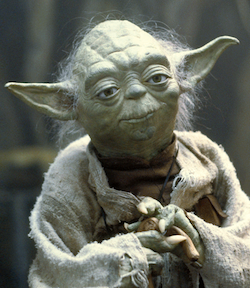 Yoda’s quote has been my mantra for years. Cheesy, I know, but the distance between “trying” and “doing” is important to me.
Yoda’s quote has been my mantra for years. Cheesy, I know, but the distance between “trying” and “doing” is important to me.
Merriam-Webster defines “try” as “to make an effort to do something: to attempt to accomplish or complete something,” and “do” as “to bring to pass.”
Attempting to do something doesn’t cut it for me. I need to bring that book to pass. I need to complete what I start (which is why, when I took up knitting, I wanted to finish that sweater/scarf/hat in one sitting. It was a terrible hobby for me.). But “bringing something to pass” isn’t always pretty, especially the first time around. Pinterest fails are proof of that.
This is also why I’m not all over Pinterest.
Like all writers, I put a lot of effort into my work. I struggle over drafts, agonize over revisions, and stress about reviews, sales, and what comes next. Over and over, I remind myself that as long as I keep doing something, I’m doing something—even if all I’m doing is moving forward in small steps. I eke out those hours—or minutes—to work on my novel. I set aside time to grade those papers. I play with my kids.
Most of the time, I feel like I am failing at all of it: the writing is crappy, I can’t ever get to the bottom of the grading pile, my kids watch too much TV. That’s when Beckett comes in:
“No matter. Try again. Fail again. Fail better.”
I first saw his quote on poet January Gill O’Neil’s blog. As much as Yoda encourages me to keep going and keep doing, Beckett gives me the permission to do so badly. I don’t have to succeed every single time I do, I just have to suck a little less next time. For someone like me, who holds herself to unreasonable standards and sleeps very little, this is freeing.
This manuscript stinks? I can make it better with revision.
This class discussion bombed? Next time I’ll approach the topic differently.
Fed the kids leftover mac n cheese and pizza for dinner? Tomorrow we’ll have veggies.
Have I made my peace with failure? Not exactly; because once you do make peace with failure, you slip into the realm of “trying.” Yet accepting the tenets of Beckett’s failure allows me to follow Yoda’s advice. As long as I keep failing better, I keep doing. And that’s success.
Tomorrow, I’ll fail again. Without trying.
Filed under: Miscellaneous Tagged: erin dionne, failure, there is no try, yoda
Blog: Cartoon Brew (Login to Add to MyJacketFlap)
JacketFlap tags: Denis Dutton, Preston Blair, Scrat, Peter Thaler, Stephen Jay Gould, WALL·E, Character Design, Ideas/Commentary, Cartoon Culture, Educational, Yoda, Trolls, Pixar, E.T., Ice Age, Finding Nemo, Add a tag
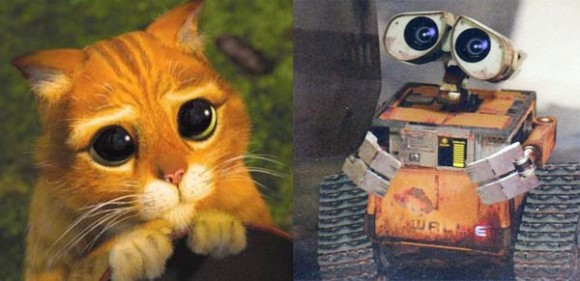
Over on question-and-answer website Quora, someone posted a very simple question: Which is the cutest cartoon character ever created? The answers from Quora members cover a broad spectrum, some more obvious (Tweety, Pokemon, Pooh) and others less so (Gertie the Dinosaur, Night Fury from How to Train Your Dragon).
So what makes a cartoon character cute? You could reduce the answer down to a few basic characteristics: big eyes and head, fluffiness, warmth and chubbiness. “Cuteness is based on the basic proportions of a baby plus the expressions of shyness or coyness,” wrote Preston Blair in Advanced Animation. According to Blair, other cute traits include:
- Head large in relation to the body.
- Eyes spaced low on the head and usually wide and far apart.
- Fat legs, short and tapering down into small feet for type.
- Tummy bulges—looks well fed.

But cuteness is far more complex than even Blair’s set of rules; some consider E.T., Yoda and WALL·E to be the epitome of cute, despite their furless, odd appearances. Cuteness and a character’s perceived hugability aren’t always determined by aesthetic appeal. “Cuteness is distinct from beauty,” wrote Natalie Angier for The New York Times. “Beauty attracts admiration and demands a pedestal; cuteness attracts affection and demands a lap.”
In essence, any creature deemed cute is one that speaks to our nurturing instincts. The cuteness of an infant can motivate an adult to take care of it, even if the baby is not a blood relation. Even more, studies have found that humans transfer these same emotions to animals (or even inanimate objects) that bear our similar features. Finding Nemo combined all of these psychological elements perfectly—you can’t hug or cuddle a fish, yet adorable Nemo, with his fin damaged from birth and his human-like facial features, appeals to our caregiving instincts. In fact, every character in Pixar films, whether it’s a clownfish or a car, features forward-facing eyes, the most crucial feature for achieving an emotional connection with the audience.
But with any extreme comes another. If a character is too cute and sugary sweet, the audience can develop skepticism. “Cute cuts through all layers of meaning and says, ‘Let’s not worry about complexities, just love me,’” philosopher Denis Dutton told The New York Times. It is for that very reason cuteness stirs uneasiness and sometimes feels cheap.
After all, the adorable, smiling face of a child can hide the havoc he just wreaked by breaking all of his toys. “Cuteness thus coexists in a dynamic relationship with the perverse,” writes Daniel Harris in his book Cute, Quaint, Hungry And Romantic: The Aesthetics Of Consumerism. You could call this the Gremlin Effect—a character with an underlying creepiness. Troll dolls (which were recently acquired by DreamWorks Animation) and Cabbage Patch Kids are the inexplicable result of this paradox.
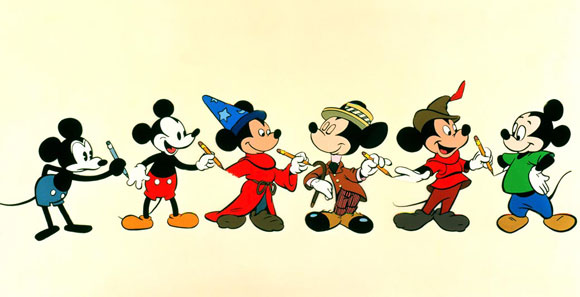
There’s no denying a cultural need to pigeonhole and perfect the attributes that could be popularly deemed cute. In his fantastic short essay on Mickey Mouse, biologist and historian Stephen Jay Gould asserts that Mickey’s changing appearance over time is a physical evolution that mirrors cultural attitudes toward cuteness. As the Benjamin Button of animated rodentia, Mickey’s eyes and head have grown larger, his arms and legs chubbier. Mickey has become more childlike and, most would say, more cute and less rat-like. Mickey isn’t the only character to undergo this transformation. The teddy bear, first sold in 1903, started out anatomically similar to a real bear, with a long snout and gangly arms. Today’s teddy bears more closely resemble the Care Bears, with pudgier features and colorful fur.
Audience don’t always need Mickey’s goofy grins and huge eyes to connect with a character’s cuteness. Pictoplasma, the artists’ network and conference that celebrates characters extracted from context, reveals how sometimes it’s our own invented narrative that blasts a character into hall-of-fame cuteness. As Pictoplasma co-founder Peter Thaler said explains, “It’s a horrible example, but Hello Kitty has no facial expression. You don’t know if she’s happy or sad; you just see these two dots. You’re projecting all the narration, the biography.”
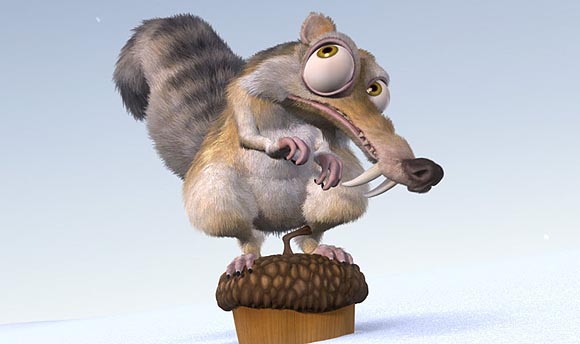
Our ideals of cuteness continue to evolve, a trajectory in visual culture that has birthed Hello Kitty and Japan’s kawaii movement, Giga Pets, Furby, Elmo and Slimer. Often the most exciting, memorable cute characters are the ones who bear negative traits that reveal the vulnerability. Scrat, the saber-toothed squirrel from Ice Age, is adorable and loved by audiences even more for his greed. Cuteness, perhaps then, is not just about an objective set of physical features—it’s also about a behavior that compels audiences and connects us emotionally to the character.
Add a CommentBlog: Cartoon Brew (Login to Add to MyJacketFlap)
JacketFlap tags: Finding Nemo, Denis Dutton, Preston Blair, Scrat, Peter Thaler, Stephen Jay Gould, WALL·E, Character Design, Ideas/Commentary, Educational, Yoda, Trolls, Pixar, E.T., Ice Age, Add a tag

Over on question-and-answer website Quora, someone posted a very simple question: Which is the cutest cartoon character ever created? The answers from Quora members cover a broad spectrum, some more obvious (Tweety, Pokemon, Pooh) and others less so (Gertie the Dinosaur, Night Fury from How to Train Your Dragon).
So what makes a cartoon character cute? You could reduce the answer down to a few basic characteristics: big eyes and head, fluffiness, warmth and chubbiness. “Cuteness is based on the basic proportions of a baby plus the expressions of shyness or coyness,” wrote Preston Blair in Advanced Animation. According to Blair, other cute traits include:
- Head large in relation to the body.
- Eyes spaced low on the head and usually wide and far apart.
- Fat legs, short and tapering down into small feet for type.
- Tummy bulges—looks well fed.

But cuteness is far more complex than even Blair’s set of rules; some consider E.T., Yoda and WALL·E to be the epitome of cute, despite their furless, odd appearances. Cuteness and a character’s perceived hugability aren’t always determined by aesthetic appeal. “Cuteness is distinct from beauty,” wrote Natalie Angier for The New York Times. “Beauty attracts admiration and demands a pedestal; cuteness attracts affection and demands a lap.”
In essence, any creature deemed cute is one that speaks to our nurturing instincts. The cuteness of an infant can motivate an adult to take care of it, even if the baby is not a blood relation. Even more, studies have found that humans transfer these same emotions to animals (or even inanimate objects) that bear our similar features. Finding Nemo combined all of these psychological elements perfectly—you can’t hug or cuddle a fish, yet adorable Nemo, with his fin damaged from birth and his human-like facial features, appeals to our caregiving instincts. In fact, every character in Pixar films, whether it’s a clownfish or a car, features forward-facing eyes, the most crucial feature for achieving an emotional connection with the audience.
But with any extreme comes another. If a character is too cute and sugary sweet, the audience can develop skepticism. “Cute cuts through all layers of meaning and says, ‘Let’s not worry about complexities, just love me,’” philosopher Denis Dutton told The New York Times. It is for that very reason cuteness stirs uneasiness and sometimes feels cheap.
After all, the adorable, smiling face of a child can hide the havoc he just wreaked by breaking all of his toys. “Cuteness thus coexists in a dynamic relationship with the perverse,” writes Daniel Harris in his book Cute, Quaint, Hungry And Romantic: The Aesthetics Of Consumerism. You could call this the Gremlin Effect—a character with an underlying creepiness. Troll dolls (which were recently acquired by DreamWorks Animation) and Cabbage Patch Kids are the inexplicable result of this paradox.

There’s no denying a cultural need to pigeonhole and perfect the attributes that could be popularly deemed cute. In his fantastic short essay on Mickey Mouse, biologist and historian Stephen Jay Gould asserts that Mickey’s changing appearance over time is a physical evolution that mirrors cultural attitudes toward cuteness. As the Benjamin Button of animated rodentia, Mickey’s eyes and head have grown larger, his arms and legs chubbier. Mickey has become more childlike and, most would say, more cute and less rat-like. Mickey isn’t the only character to undergo this transformation. The teddy bear, first sold in 1903, started out anatomically similar to a real bear, with a long snout and gangly arms. Today’s teddy bears more closely resemble the Care Bears, with pudgier features and colorful fur.
Audience don’t always need Mickey’s goofy grins and huge eyes to connect with a character’s cuteness. Pictoplasma, the artists’ network and conference that celebrates characters extracted from context, reveals how sometimes it’s our own invented narrative that blasts a character into hall-of-fame cuteness. As Pictoplasma co-founder Peter Thaler said explains, “It’s a horrible example, but Hello Kitty has no facial expression. You don’t know if she’s happy or sad; you just see these two dots. You’re projecting all the narration, the biography.”

Our ideals of cuteness continue to evolve, a trajectory in visual culture that has birthed Hello Kitty and Japan’s kawaii movement, Giga Pets, Furby, Elmo and Slimer. Often the most exciting, memorable cute characters are the ones who bear negative traits that reveal the vulnerability. Scrat, the saber-toothed squirrel from Ice Age, is adorable and loved by audiences even more for his greed. Cuteness, perhaps then, is not just about an objective set of physical features—it’s also about a behavior that compels audiences and connects us emotionally to the character.
Add a CommentBlog: The Lemme Library (Login to Add to MyJacketFlap)
JacketFlap tags: star wars, yoda, glee, Add a tag
Blog: The Lemme Library (Login to Add to MyJacketFlap)
JacketFlap tags: yoda, origami yoda, tom angleberger, friday funny, Add a tag
Blog: The Children's Book Review (Login to Add to MyJacketFlap)
JacketFlap tags: Star Wars, Yoda, Books for Boys, Reluctant Readers: Will be begging for more, Book Lists: Specialty picks, Books into Movies, Ryder Windham, Ben Burtt, J.W. Rinzler, Add a tag
By Bianca Schulze, The Children’s Book Review
Published: December 13, 2010
We all know that when a person, big or small, loves Star Wars, they really LOVE Star Wars. And as crazy as it is, even children that have never even seen the film can be 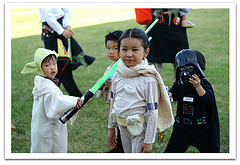 obsessed with Star Wars.
obsessed with Star Wars.
Before you take a look at this year’s list of Star Wars picks, Yoda has a few words of wisdom that he would like to share with you as you ponder the idea of giving books to your young jedi:
“Truly wonderful, the mind of a child is. Give the gift of reading, you will! Do or do not… there is no try.”
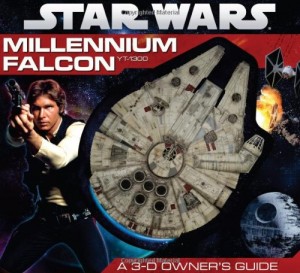 Star Wars: Millennium Falcon- A 3-D Owner’s Guide
Star Wars: Millennium Falcon- A 3-D Owner’s Guideby Ryder Windham
Reading level: Ages 8-12
Board book: 24 pages
Publisher: Scholastic Inc.; Brdbk edition (September 1, 2010)
Source of book: Publisher
Publisher’s synopsis: This novelty format dissects the most famous ship in the galaxy section-by-section, revealing the ship’s secrets and special modifications.
Includes technical notes from Han Solo as well as a detailed overview of each of the ship’s main functions.
Add this book to your collection: Star Wars: Millennium Falcon- A 3-D Owner’s Guide
by Benjamin Harper
Hardcover: 320 pages
Publisher: Chronicle Books (October 1, 2008)
Source of book: Personal collection
Publisher’s synopsis: Even the most die-hard Star Wars fans will find themselves challenged by this entertaining new approach to the details of the saga. This fourth volume in the popular addictive Obsessed With series again includes an in
Add a CommentBlog: BecKaDoodles Blog (Login to Add to MyJacketFlap)
JacketFlap tags: Science fiction, movies, illustration, cartoons, art, star wars, Cartoon, children's illustration, ink, yoda, coloring book, c-3po, r2-d2, rebel legion, Add a tag
So I've been super duper busy drawing and inking and coloring and then doing it all over again. I have a few more commissions to finish up before I take a few weeks off to spend with my Hubby before he goes off to Afghanistan for 7 months. I just finished work on 111 sketch cards for Breygent's Cartoon Classics (can't wait to show them off...) I was also asked to draw a few Star Wars cartoons for the Rebel Legion's coloring book which was probably way too much fun for me...
Here's a peak at the images I drew for them:
Blog: Boys Rule Boys Read! (Login to Add to MyJacketFlap)
JacketFlap tags: Star Wars, Trivia, Yoda, Jay Piscopo, The Undersea Adventures of Captian Eli, Card Game, Capt'n Eli Event, Add a tag


Hello again all in the Land of Blog!!!!! I Darth Bill send you warm wishes (well as warm as a Sith can) and greetings. I am very excited because I have a very special announcement to make on this blog. It's better than flying a Tie Fighter; better than fighting Yoda in a one on one Light Saber Battle; even better than blowing something up with a Death Star. What is it you ask??????? Well, let me tell you.
First you must answer yes to the following questions:
1) Do you enjoy Comics and Graphic Novels?
2) Do you enjoy trivia and feats of knowledge?
3) Do you enjoy strategic card games?
If you answered yes to those three questions, man, do I have something to tell you!!!!!!!
 Well, one of the best Graphic Novels to come out in a long time is now in the Public Library of Charlotte and Mecklenburg County System. What is the name of this great book you ask???? The name of this Graphic Novel is "The Undersea Adventures of Capt'n Eli" by Joe Piscope. What's even better is that it is just the first volume of more to come. To celebrate this new Graphic Novel Series we will be having a special "Capt'n Eli" Event here in the Spangler Library at ImaginOn on 9/10/08 from 4 p.m. to 6 p.m.
Well, one of the best Graphic Novels to come out in a long time is now in the Public Library of Charlotte and Mecklenburg County System. What is the name of this great book you ask???? The name of this Graphic Novel is "The Undersea Adventures of Capt'n Eli" by Joe Piscope. What's even better is that it is just the first volume of more to come. To celebrate this new Graphic Novel Series we will be having a special "Capt'n Eli" Event here in the Spangler Library at ImaginOn on 9/10/08 from 4 p.m. to 6 p.m.  This event will involve:
This event will involve: 
1) Collecting game cards (relating to "The Undersea Adventures of Capt'n Eli" card game), through searching for Trivia Posters posted throughout the Spangler Room. To obtain a game card you must answer the trivia questions correctly.
2) Playing the super cool card strategy game (with the cards you collected through the trivia contest) with other kids who come to the event.
3) Obtaining Official Membership as a "Seasearcher" with all its rights and privileges.
4) Getting the chance to be one of the first people to check out from the library "The Undersea Adventures of Capt'n Eli." 

This event is going to be a blast matey!!!!! So if you live nearby, be sure to try and make it here. If you have any questions, please just post to the blog or give a call to the library at 704-973-2720.
To see my review of this Graphic Novel click HERE!
Also to learn more about "The Undersea Adventures of Capt'n Eli" go to its Web Site at http://www.captneli.com/
Hope to see you here, Captain "Bootstrap" Bill Aaaarrrrrrhhhhhhhh!!!!!!!!!!!!
Blog: The Excelsior File (Login to Add to MyJacketFlap)
JacketFlap tags: young adult, monsters, london, monty python, teen, yoda, dinosaurs, tokyo, Britain, GuysLitWire, big dumb book, kraken, mental pictures, Add a tag
by Sam Enthoven Razor Bill / Penguin 2008 Let's play a game of Mental Picture and see how things go. First, imagine two giant monsters throwing down like a couple of WWF wrestlers in a large metropolitan city. Sort of like in a Godzilla movie, with both of these monsters a couple hundred feet tall, tossing each other into famous landmarks and obliterating the skyline. One of them is a
Blog: Original Content (Login to Add to MyJacketFlap)
JacketFlap tags: Jamie Lee Curtis. Picture books, Add a tag
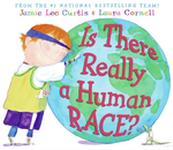
I have way too much to read stacked up in my own house, but I can't stand leaving a library empty-handed. So the last time I made a run to the library for returns, I picked up some picture books.
I've been hearing about Jamie Lee Curtis's books for years, so when I saw her new one, Is There Really a Human Race?, I snatched it up. I'd heard that Curtis was inspired to write this book when one of her own children asked her if the term "human race" meant that there was some kind of race that humans were running. I like that. I like inspiration coming from every day events and interactions with people.
But I did find this book a little...preachy. Essentially, it's saying don't scramble to get ahead. That's certainly good advice, but that's what the book is all about...advice. I wonder, too, if a small child will understand all of it.
"Do some of us win? Do some of us lose?
Is winning or losing something I choose?
Why am I racing? What am I winning?
Does all of my running keep the world spinning?"
I know adults who would find that too deep.
Believe it or not, I used to teach Sunday school. For eleven years, in fact. (Yeah, yeah, yeah. They were short on warm bodies to prop up at the front of the classrooms.) I began my Sunday school teaching career in the preschool. Each week we'd gather the 3-, 4-, and 5-year-olds together for a fifteen-minute worship service. Instead of a sermon, the worship leader read them a picture book. Not all the picture books she chose were Bible stories or even spiritual. Some of them were just well-intentioned and...instructive.
I can easily imagine Is There Really a Human Race? being read aloud in that setting, with the leader stopping every few pages to ask questions and make sure the kids get the jokes. Being read aloud during a Sunday school story time isn't a bad thing by any means. But it seems like a more natural place for a child to hear Human Race than, say, right after school while snacking on crackers and cheese or while curled up with a parent for a bedtime story.
Of course, instruction may have been Curtis's intention. If you go to The Books section of her website, you'll find that each of her titles is labelled with a topic like "Self Control" or "Moods & Feelings." (The label for Is There Really a Human Race? is "Self Awareness.") A teaching theme may be her interest as a writer.




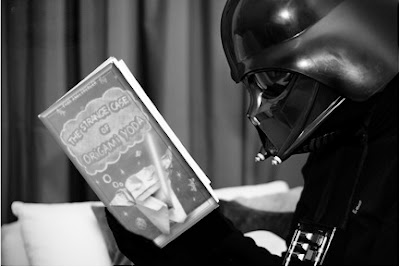
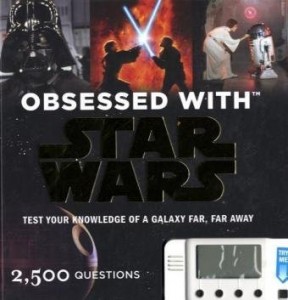
Oh yeah, that's her M.O. Thing is, she is one of the celeb authors that people often want to keep around.
Maybe on any of your library days you can check out three celebrity picture books. I'd particularly "recommend" Madonna's Lotsa de Casha.
My very superficial impression of celebrity children's authors is that a lot of them seem to be interested in teaching something with their writing, which, to me, is a very old-fashioned function of children's literature. It would be interesting if someone could figure out why so many of them feel that need.